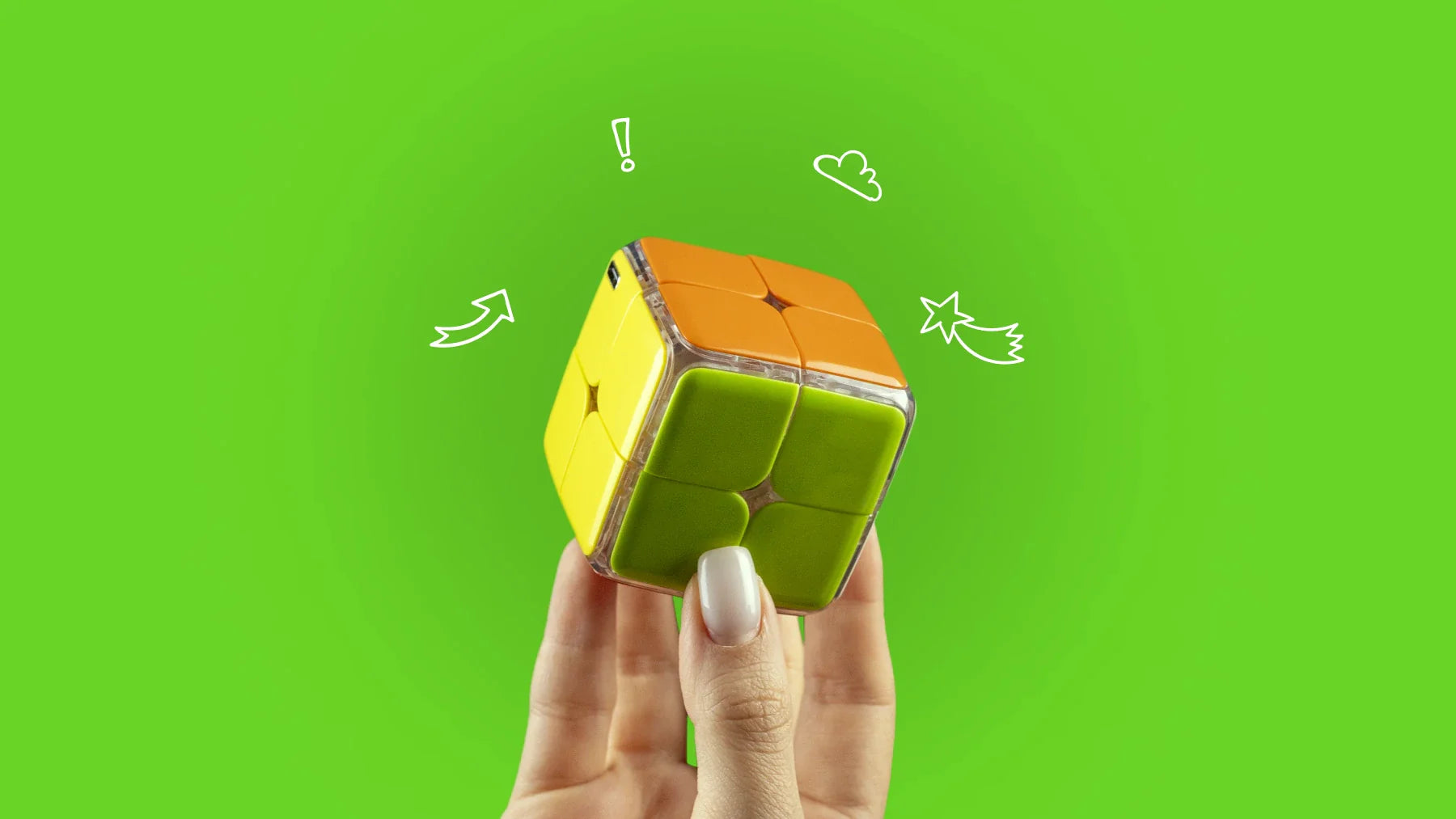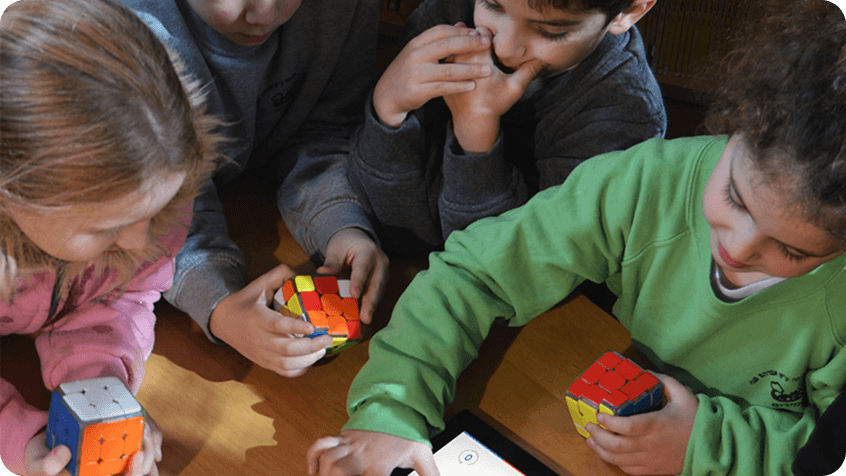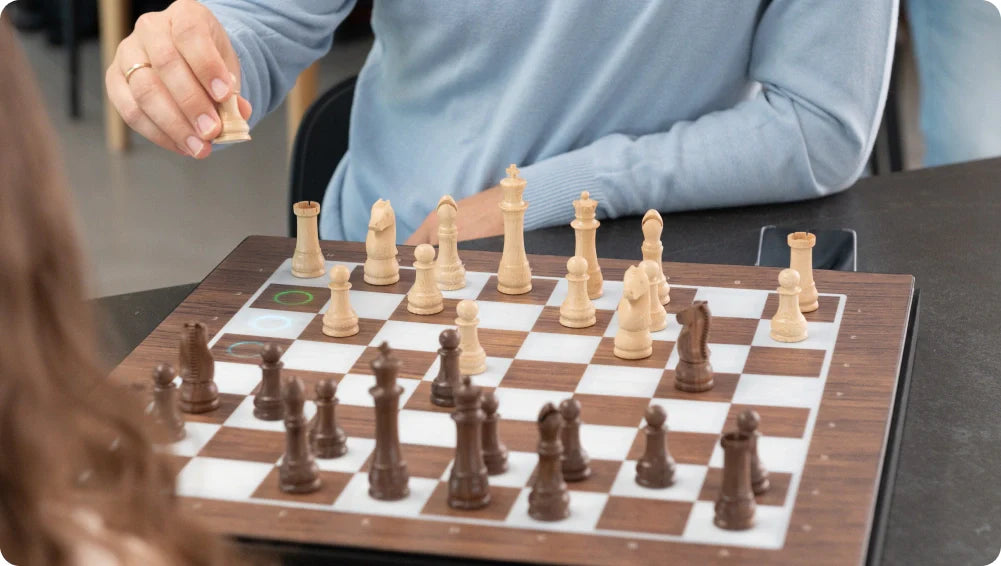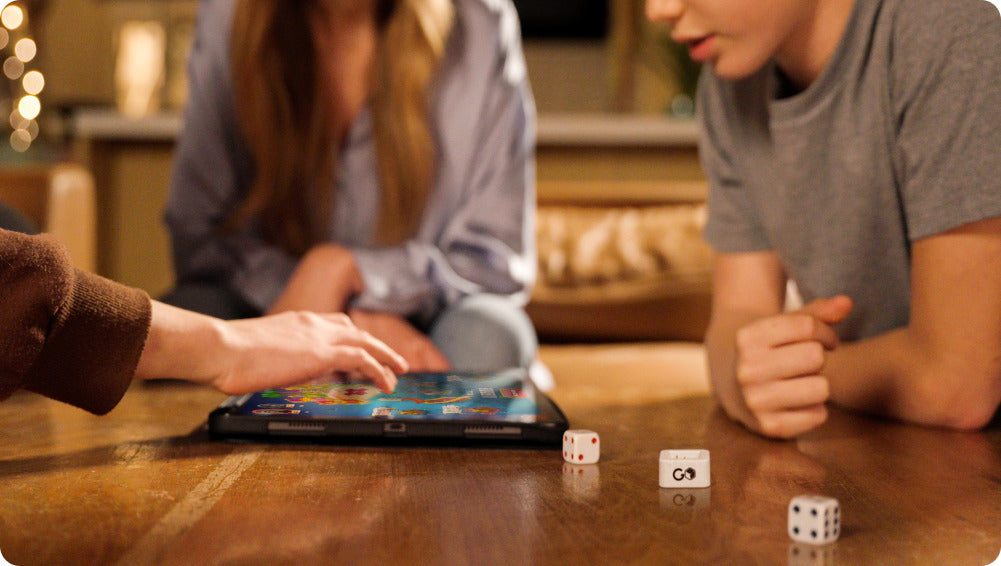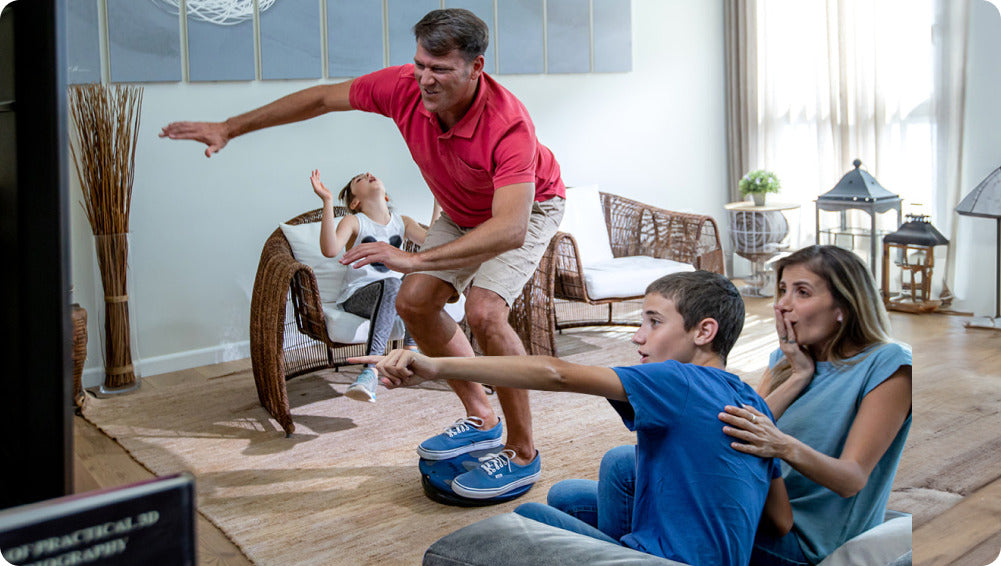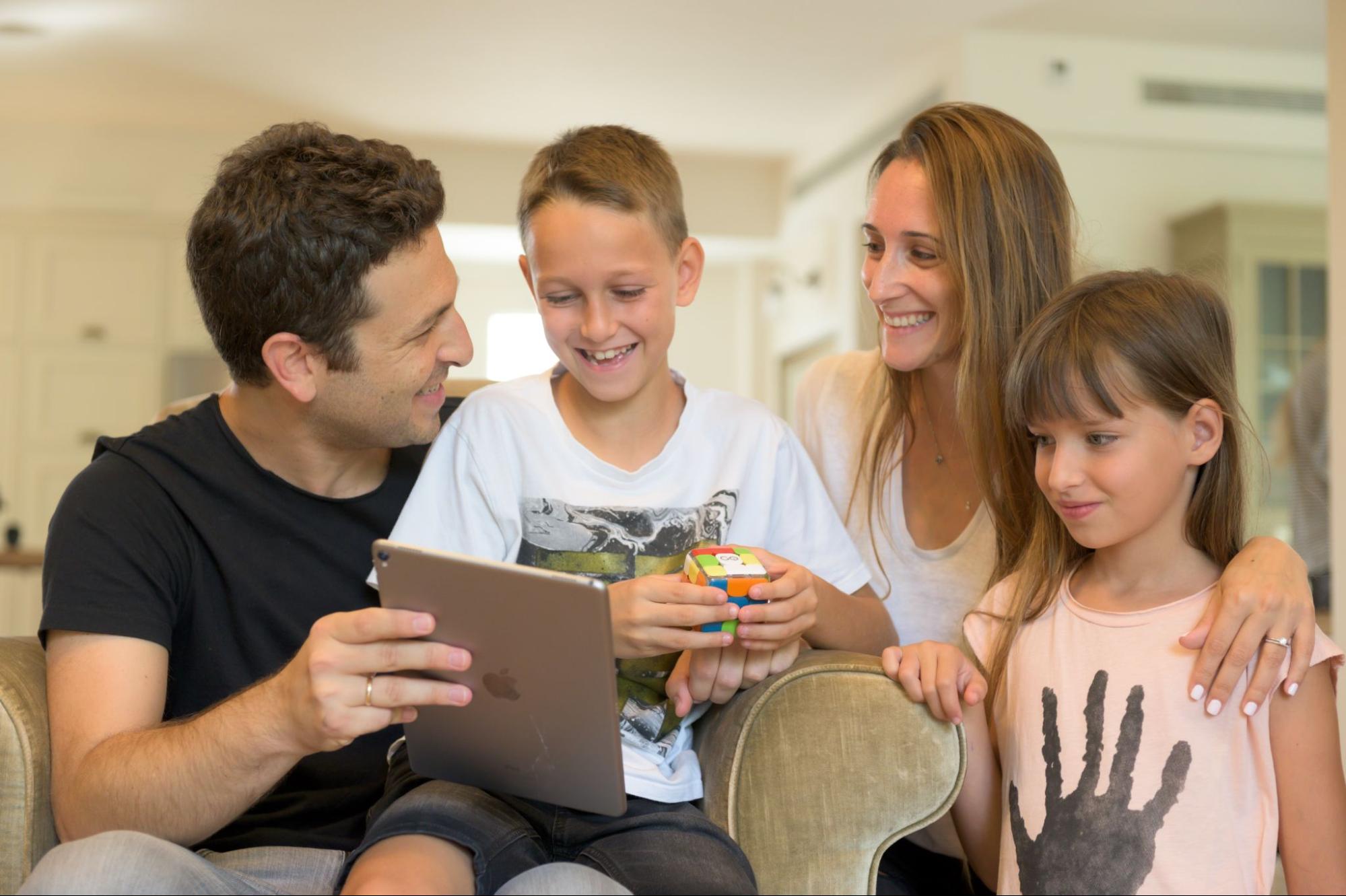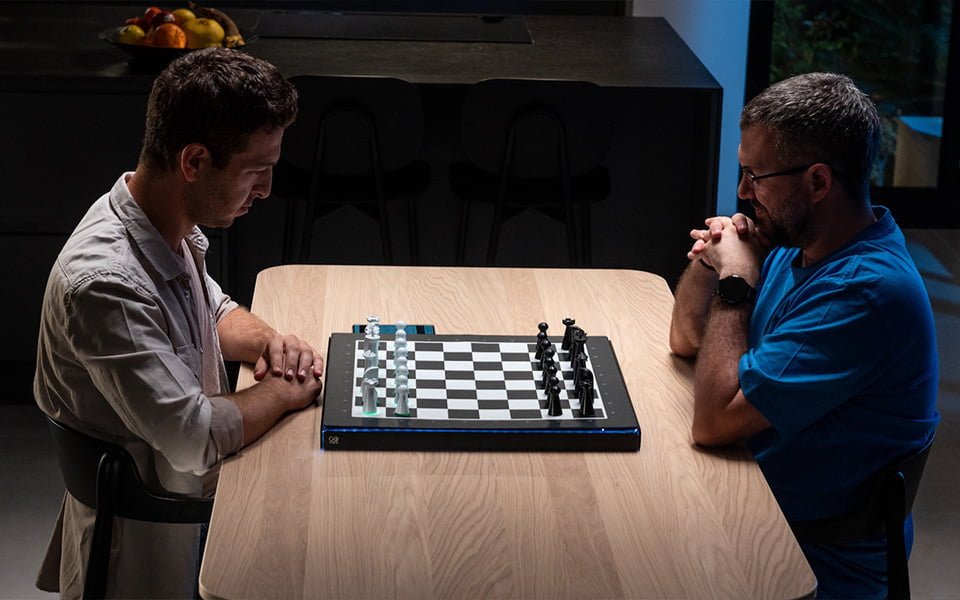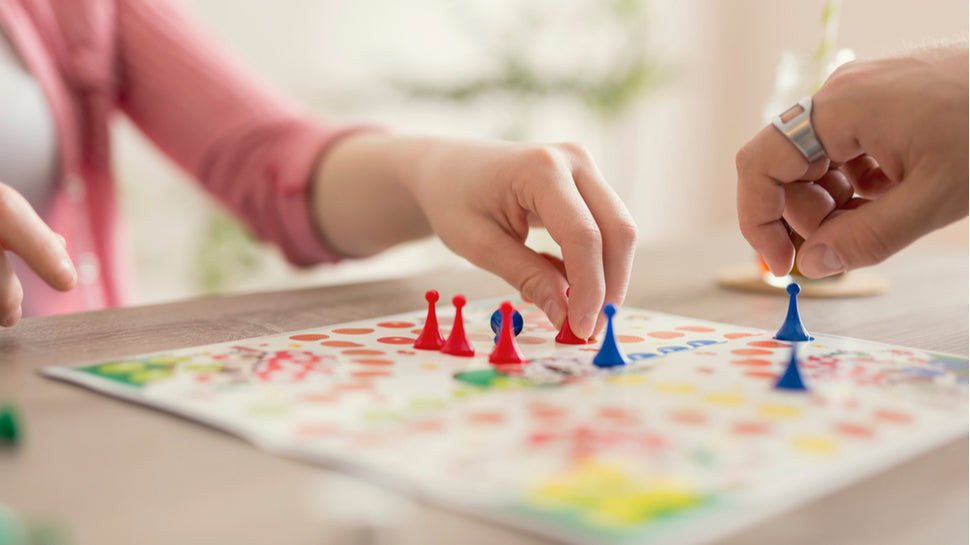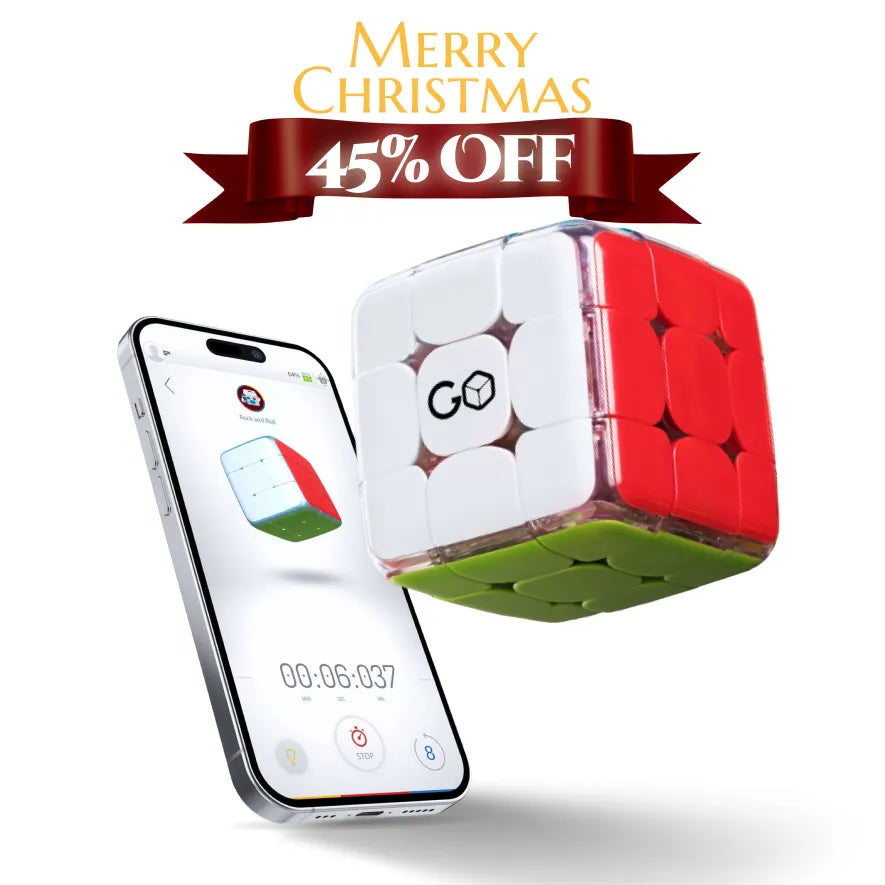The 2x2 Rubik’s Cube, also known as the "Pocket Cube," might seem like a simpler version of the iconic 3x3 Rubik’s Cube, but don’t be fooled! While it's less complex in terms of pieces, solving it still requires logic, strategy, and a few clever algorithms.
Whether you’re brand new to cubing or looking to improve your skills, this guide will walk you through everything you need to know about solving the 2x2 cube — from basic terminology to tips and tricks for solving it faster.
Ready to solve? Let’s dive in!
Key Terms for the 2x2 Rubik’s Cube
Before diving into the solving techniques, it’s essential to understand some key terms. These will help you follow instructions more easily and give you a foundational understanding of how the cube works. Knowing the language of cubing is half the battle!
- Face: Each side of the cube is called a face. On a 2x2 cube, there are six faces, each represented by a solid color when solved. The standard colors on a Rubik’s Cube are white, yellow, blue, green, red, and orange. When we refer to a face, we’re talking about all the squares (or stickers) on that side.
- Sticker: The colored square on each face of the cube is called a sticker. On a solved cube, all the stickers on a face will be the same color. These stickers move around when you rotate the cube, and your goal is to return them to their original positions. Each sticker's position is important because it provides visual clues for solving the puzzle.
- Piece (Corner/Edge): On a 2x2 cube, there are only corner pieces (not edges, like on the 3x3). Each corner piece has three stickers of different colors, and placing these corner pieces in their correct positions is key to solving the cube. Understanding which pieces go where is a vital part of mastering the puzzle.
- Move: A move is a rotation of any side of the cube. Moves are typically 90 degrees (quarter turn) or 180 degrees (half turn). For example, rotating the right face of the cube a quarter turn clockwise is considered one move. Moves are what drive the algorithms, and it’s helpful to practice rotating sides smoothly.
- Algorithm: An algorithm is a sequence of specific moves performed in a particular order. It may look like a confusing string of letters at first (such as R U R' U'), but with practice, you’ll find that each algorithm produces a predictable result, whether it’s swapping two pieces or solving a face. Algorithms are the building blocks of solving techniques and make solving cubes faster and more efficient.
- Notation: To follow algorithms, you need to understand notation. This is the system of letters and symbols used to represent different moves. Each letter corresponds to a specific face of the cube:
- R = Right face
- L = Left face
- U = Upper face
- D = Down face
- F = Front face
- B = Back face
- If you see a letter on its own (e.g., R), it means to turn that face 90 degrees clockwise. If there’s an apostrophe after the letter (e.g., R'), it means to turn that face 90 degrees counterclockwise. A number after the letter (like R2) means a 180-degree turn.
- Permutation and Orientation: These two terms describe the state of the cube’s pieces. Orientation refers to the direction a piece is facing, while permutation refers to where the piece is located. In the final steps of solving a 2x2 cube, algorithms help to permute and orient pieces to their correct positions.
- Cube Rotation: Cube rotation is when you physically rotate the entire cube to view different faces. This is different from making a move, which involves rotating a single face. Cube rotations are often written in algorithms as x, y, z, where each letter refers to a particular axis (like spinning the cube around itself).
Mastering these terms will help you navigate both the beginner-friendly and more advanced solving methods we’ll explore. It’s like learning the grammar of cubing — once you understand how everything fits together, solving becomes much easier and more intuitive!
Step-by-Step Guide: How to Solve a 2x2 Rubik’s Cube
Now, let’s dive into the process of solving the 2x2 cube. The method we’ll use is called the Layer by Layer method, which is widely considered the most beginner-friendly approach. This method focuses on solving one layer at a time so you can gradually build up the solution without getting overwhelmed.
Step 1: Solving the First Layer
The first step is to solve the first layer, which means you’ll choose a color (often white) and position all the pieces with that color on the same face. This is sometimes referred to as "making a face" or "solving the white face" if you choose white. However, this is only half of the job — you also need to ensure that the adjacent stickers (the sides of the corner pieces) are correctly aligned with the center pieces of their respective faces.
To start:
- Pick a white corner piece: If you're using white, find a corner piece that has a white sticker and place it on the bottom layer.
- Place the next white corner: Look for another white corner piece, and through rotations, bring it next to the already positioned piece. Remember, you need to align not only the white stickers but also the stickers on the adjacent sides.
- Repeat for the remaining white corners: Continue until all four white corner pieces are on one face, forming a solid white side with correct side alignments. You may need to use small rotations of the cube to properly position each piece.
This step is more intuitive compared to later stages, so take your time familiarizing yourself with how the pieces move and interact with one another. The key to mastering the first layer is practice. With enough repetition, you’ll find yourself completing it almost instinctively.
Step 2: Orient the Opposite Layer
Now that you’ve completed the first layer, it’s time to focus on the opposite layer (often yellow, if you started with white). The goal here is to orient the remaining pieces so that the yellow stickers are all facing the same direction, but without disrupting the white layer that you’ve already solved.

This is where you’ll start applying algorithms. These sequences of moves are designed to manipulate specific pieces without disturbing the solved layer. For this step, you’ll need a basic corner orientation algorithm, such as:
- R U R' U R U2 R'
Here’s what this means:
- R: Rotate the right face 90 degrees clockwise.
- U: Rotate the upper face 90 degrees clockwise.
- R': Rotate the right face 90 degrees counterclockwise.
- U2: Rotate the upper face 180 degrees.
Repeat this algorithm as needed to orient the pieces. The yellow stickers will gradually rotate into position, creating a fully solved second layer.
Remember, you might not always solve all the yellow pieces in one go, and that’s okay! Some cases require repeating the algorithm several times. The more you practice, the better you’ll understand how to manipulate the cube to achieve the desired results.
Step 3: Position the Corners of the Last Layer
With the yellow face oriented, you now need to position the corners correctly in the last layer. This means making sure that each corner piece is in the right spot, regardless of its orientation. Even if the yellow stickers are facing the correct direction, the corners might still need to be swapped to match the adjacent faces.
For this, you'll use the corner permutation algorithm:
- U R U' L' U R' U' L
This algorithm swaps two adjacent corner pieces without affecting the orientation. The letters indicate the moves, which you’ll perform step by step. This stage can seem a bit tricky because sometimes you might need to perform the algorithm multiple times to get the corners in their correct positions.
Here’s how it works:
- Examine the last layer: Identify which corners are already in their correct places and which ones need to be swapped. You may only need to swap two pieces, or you might have a case where all four corners are out of position.
- Apply the algorithm: Use the corner permutation algorithm to swap the pieces into their correct spots. Be patient here, as it might take a couple of tries.

The key is to pay attention to how the pieces move during each algorithmic step. With enough repetition, you'll start to see patterns, making it easier to know when and where to apply the sequence.
Step 4: Finishing Touches
At this point, your cube should be very close to solved. The final step involves performing any remaining moves to fine-tune the cube’s arrangement and make sure everything is aligned properly. By now, all the pieces should be in their correct positions — both the white and yellow layers should be solved, and all side pieces should match their respective colors.

Sometimes, all that’s left is to perform a few more simple moves to rotate pieces into their final places. If you find that one or two pieces are still slightly out of place, go back and carefully review your previous moves to ensure you haven’t missed a step.
And there you have it! You’ve solved the 2x2 Rubik’s Cube using the Layer by Layer method. While the process might feel complex at first, with practice, you’ll be able to complete these steps more quickly and with less thought. Before long, solving the 2x2 cube will become second nature.
Alternative Methods for Solving a 2x2 Rubik’s Cube
The Layer by Layer method is the most commonly used, but there are other ways to solve a 2x2 cube. Here are a couple of alternative approaches for those looking to mix things up or improve their skills:
Beginner’s Method (No Algorithms)
If the idea of learning algorithms seems daunting, don’t worry! There are simpler, non-algorithm-based methods that focus on solving the cube intuitively. This method works best for absolute beginners and focuses more on trial and error than memorization.
Using Online 2x2 Rubik’s Cube Solvers
For those who get stuck during tutorials or just want to see a solution in action, online solvers are a fantastic tool. They allow you to input your cube’s configuration and provide a step-by-step guide to solving it. One of the best options for this is the GoCube app, which pairs with the physical GoCube and offers an innovative and interactive way to solve the cube.

GoCube isn’t just a standard solver — it provides a fully immersive experience that turns solving the 2x2 cube into a learning and gaming journey. When the cube is connected to the app via Bluetooth, all your moves are tracked in real time, offering instant feedback and guidance. The app comes with the GoCube Academy, which features an interactive, step-by-step guide on how to solve the cube. Each move is not only displayed on your screen but it's also explained in detail with video tutorials, making it easier to understand and learn at your own pace.
What sets GoCube apart is its ability to assist when things don’t go according to plan. If you make a wrong move or get stuck, the app will help you get back on track by providing corrective instructions and showing you the exact steps you need to take to recover and continue solving the cube. This level of real-time feedback makes GoCube much more than just a tutorial — it’s a dynamic tool that adapts to your progress.
Once you've learned the steps to solve the cube, GoCube’s Academy has a practice mode where you can apply what you’ve learned. In practice mode, you can try solving the cube on your own while still having access to hints and interactive guides if you need them. The app is smart enough to recognize where you are in the process and can provide hints or corrections if you get stuck, making sure you never feel lost or frustrated.
For those interested in tracking their progress, the GoCube app offers detailed statistics on your solving attempts. You can monitor your time, moves, and tactics with the goal of improving your solving speed and efficiency. The app not only helps you learn but also encourages you to refine your skills and beat your personal best.
But GoCube is more than just a tool for learning how to solve the cube — it also offers fun games that you can play using your cube. These games, integrated into the app, are designed to improve your cubing skills while keeping the experience engaging and entertaining. Whether you're a beginner looking to master the basics or a seasoned cuber aiming to sharpen your speed and technique, GoCube provides a comprehensive, enjoyable way to enhance your cubing experience.
Common Challenges and How to Overcome Them
Different types of Rubik's cubes require different ways of solving and solving a 2x2 Rubik’s Cube can be frustrating at times, especially for beginners. However, many of the common challenges are perfectly normal and can be overcome with a bit of patience, practice, and a solid understanding of the mechanics. Let’s explore some of the most frequent stumbling blocks and how to resolve them.
1. Paradoxes and Misunderstood Pieces
One of the most confusing aspects for beginners is thinking that a piece is in the wrong place, when in reality, it’s just the cube’s visual complexity playing tricks on your perception. This often happens when multiple pieces seem to be out of position or misaligned. It can feel like you’ve hit an unsolvable state, but this is a common beginner's mistake.
Solution: When you encounter what seems like a paradox, pause and revisit the cube from different angles. Ensure you’re correctly identifying the color combinations and their correct placement relative to each other. Often, a piece may appear out of place because it’s not oriented correctly, not because it’s in the wrong spot. Double-check your previous steps and make sure you haven’t skipped any important algorithms, especially in the corner permutation stage. If you're still stuck, undo the last few moves and try again with a clear focus on the problem area.
2. Algorithm Confusion
Memorizing and correctly performing algorithms is one of the most common challenges for new cubers. The steps might seem straightforward when reading them, but executing the algorithms while keeping track of the cube's orientation can be overwhelming. Many beginners perform an algorithm only to find the cube looks more jumbled than before.
Solution: Focus on mastering one algorithm at a time. Start by understanding what each algorithm does. For instance, a corner orientation algorithm may seem like a random set of twists, but in reality, it swaps and rotates specific corner pieces. By understanding the purpose of the algorithm, you’ll find it easier to remember. Also, practice algorithms slowly at first. Rather than trying to rush through them, work on performing each move deliberately, ensuring that you don’t mix up rotations. As you gain confidence, your speed will naturally increase.
3. Notation Frustration
The notation system used to describe cube moves can feel like a foreign language, especially for beginners. When reading an algorithm, the letters might seem cryptic, and figuring out what "R U R' U" means while actually manipulating the cube can be daunting. Many beginners struggle to remember which face is which, leading to incorrect moves and frustration.
Solution: The best way to overcome notation confusion is to break the notation down into small, manageable chunks. Each letter corresponds to a face of the cube (R for Right, U for Up, etc.), and each symbol (prime or 2) indicates how to rotate that face. Start by practicing basic moves without worrying about solving the cube. Focus on performing quarter-turns (90 degrees) and understanding how the cube changes with each move. Once you're comfortable with simple rotations, gradually move on to more complex algorithms.
Here’s a quick practice tip: Write down a small algorithm and perform it slowly. Say each move out loud as you make it: "Right face clockwise, Up face clockwise, Right face counterclockwise…" This verbalization will help you internalize the notation.
4. Losing Track of the Cube's Orientation
It’s easy to lose track of the cube’s orientation when you’re turning it in multiple directions. This can cause confusion and lead you to perform moves on the wrong face, disrupting your progress. For example, you might be halfway through an algorithm only to realize you’re twisting the wrong side, which can completely mess up the cube.
Solution: Developing spatial awareness and maintaining a consistent orientation throughout solving is key. One helpful technique is to always keep the white face on the bottom (or whichever face you start solving first) until you need to rotate it. This will give you a reference point for the cube’s current state and prevent disorientation during algorithms. If you're working on a multi-step algorithm, pause occasionally to re-check the orientation and make sure you haven’t inadvertently rotated the cube in the wrong direction.
As you get more comfortable with the puzzle, cube orientation will become second nature. Until then, be deliberate in how you hold the cube and avoid unnecessary rotations.
Tips and Tricks to Solve the 2x2 Rubik’s Cube Faster
Once you’ve mastered the basics, you may want to improve your speed and efficiency. Here are some tips and tricks for solving the 2x2 cube faster:
- Practice Finger Tricks: Speedcubers use “finger tricks” to execute moves faster and with more precision. The more you practice, the faster you’ll get!
- Learn Advanced Algorithms: Once you’ve nailed the basics, learning a few more advanced algorithms can shave off seconds from your solving time.
- Use the GoCube for Improvement: If you’re looking to take your skills to the next level, GoCube’s app offers excellent training modules. It tracks your movements, offers real-time feedback, and even has speedcubing challenges that help you improve both accuracy and speed. Whether you're solving for fun or aiming for a personal best, GoCube can help you get there faster.
Conclusion
Solving the 2x2 Rubik’s Cube is a rewarding and satisfying challenge for beginners and experienced cubers alike. With a bit of practice, you’ll be solving the cube in no time — and who knows, maybe you’ll be on your way to tackling the classic 3x3!
FAQ
Can You Solve a 2x2 Rubik’s Cube Without Algorithms?
Yes, some beginners opt for more intuitive solving methods without relying on algorithms. However, using algorithms can make solving faster and more consistent.
Is the 2x2 Rubik’s Cube Easier than the 3x3?
Yes! The 2x2 cube is generally easier than the 3x3 because it has fewer pieces and requires fewer moves to solve. However, mastering both has its own unique challenges. Regardless of your chosen type, there are an uncountable number of benefits of a Rubik's cube.
How long does it take to solve a 2x2 Rubik’s Cube?
For beginners, it can take anywhere from a few minutes to an hour. With practice, experienced cubers can solve it in under 10 seconds!



